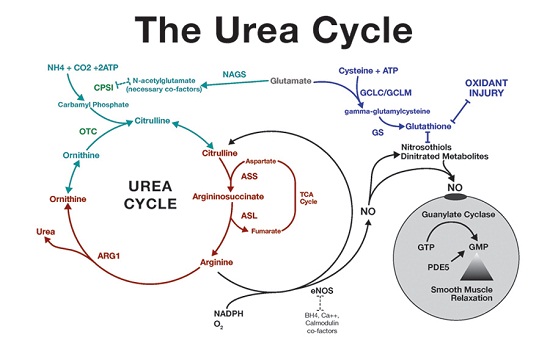Urea Cycle:
The urea cycle which is also known as the ornithine cycle is a cycle of biochemical reactions occurring in several animals which produces urea ((NH2)2CO) from ammonia NH3. That cycle was the first metabolic cycle established by Hans Krebs and Kurt Henseleit in the year of 1932, five years before the discovery of the TCA cycle. In the mammals, the urea cycle takes place primarily in the liver and to a lesser extent in the kidney.

Organisms which cannot quickly and easily remove ammonia commonly have to convert it to some other substance such as urea or uric acid that is much less toxic. The Insufficiency of the urea cycle occurs in some genetic disorders (inborn errors of metabolism) and in liver failure. The conclusion of liver failure is accumulation of nitrogenous waste and majorly ammonia, that leads to hepatic encephalopathy.